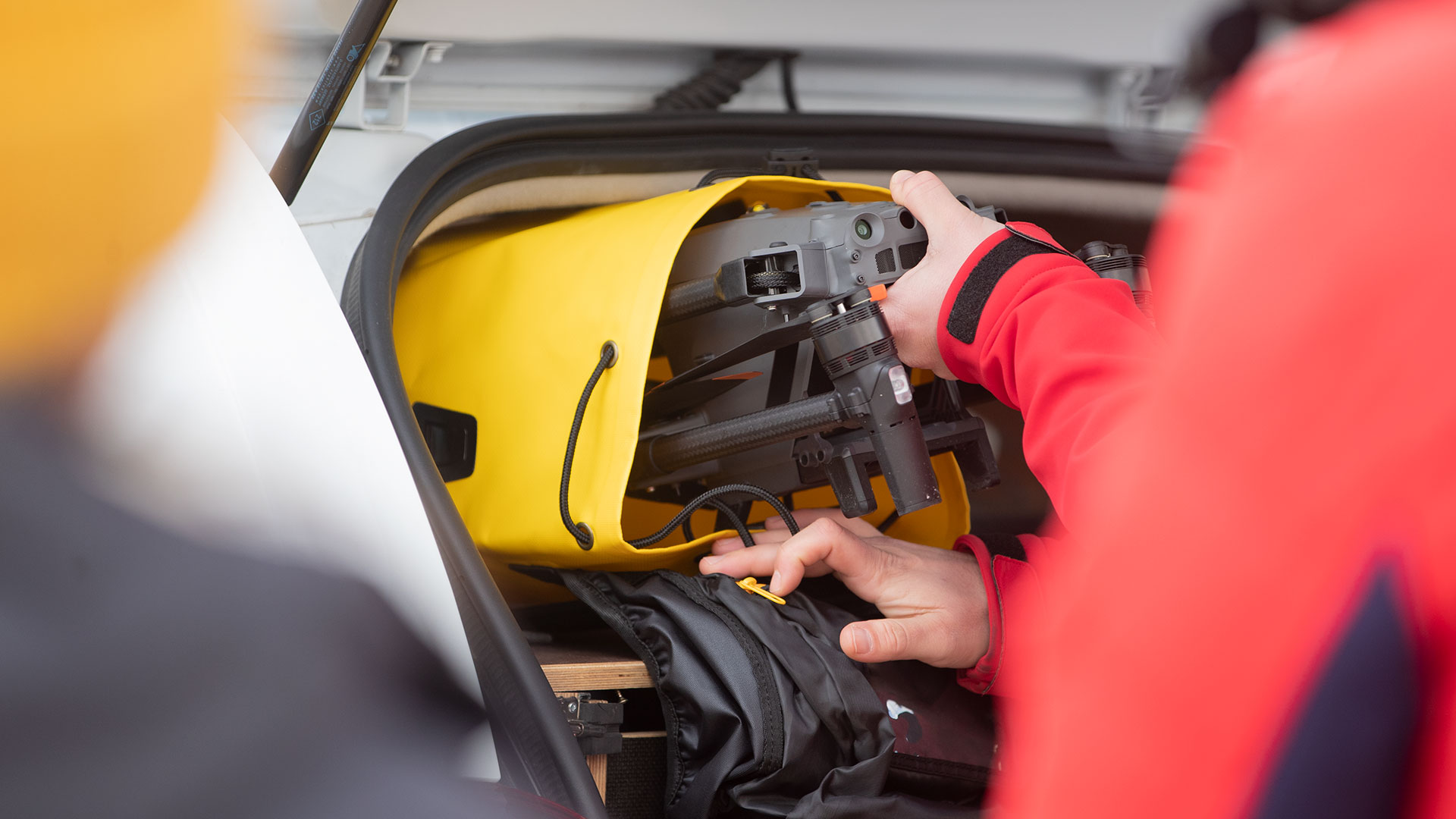

DJI has announced a new commercial drone range with a couple of seriously impressive tricks up its sleeve. First, it can be flown in absolutely appalling weather conditions. And second, when combined with the also-new DJI Dock, it can conduct its own autonomous flights, without you even needing to be there.
Available in M30 and M30T variants, this is DJI's new flagship model for professional drone operators. While the Matrice 30 isn't for hobbyists, we're hoping some of the pioneering tech that powers these hardy birds might filter down into the models that populate today's best drones ranking at some point. DJI's pro models are already capable of some pretty impressive stuff (check out this stunning freeride ski film shot entirely with 3 DJI drones, for example), but the M30 seems to take things to even higher heights.
Let's start by looking at the drone itself. Like I said, it's ready to take on some pretty unpleasant weather conditions. The kind of weather that would see a camping excursion abandoned in a heartbeat. It'll soar through high winds, heavy rain and snow, at high altitude, and extreme temperatures – the M30 is happy to take to the skies in temperatures from -4 Farenheit (a decidedly nippy -20 Centigrade) up to 122F (that's a balmy 50C).
While it's not exactly featherweight (3.7kg takeoff weight), the M30 is impressively portable for a commercial drone. Here it is being casually packed into a backpack and onto a pickup truck.

Now to trick number two: the Dock. While you can't sling it on your back like a backpack, the new DJI Dock will let you conduct drone flights without any human intervention whatsoever (after the setup part, of course, using the DJI FlightHub 2 fleet management cloud-based software). Looking like a cross between a camping fridge and a miniature helipad, the Dock opens up to release the M30 for its pre-programmed flight, and once returned, it'll close up and recharge it ready to go again in as little as 25 minutes. (Of course, there are certain laws around unsupervised flight that you'll need to adhere to... but still.)

A clever self-heating battery means the M30 can stay in the air for 41 minutes on a single charge, the smart charging case will juice the battery up from 20% to 90% in 30 minutes, and there's an integrated battery cooling system too. Like the drones themselves, the Dock is a pretty rugged affair, being waterproof and dust-proof, even when open.
What kind of situation might this kind of drone and setup be useful for, I hear you ask? DJI suggests such anticlimactic but practical endeavours as infrastructure inspection, environmental protection and public safety checks. Or perhaps emergency rescue missions in unfavourable weather conditions.
Get all the latest news, reviews, deals and buying guides on gorgeous tech, home and active products from the T3 experts

The M30 series comes in two versions, the M30 and the M30T, with the main difference being in the camera setup. The M30 boasts a 48 megapixel 1/2'' CMOS sensor zoom camera with 5x~16x optical and 200x digital zoom, a 12 megapixel wide-angle camera, enabling 8k photo 4K/30 fps video resolution. There's also a laser rangefinder capable of giving the precise coordinates of objects up to 1,200 meters away. The M30T features an additional 640x512 pixel radiometric thermal camera.
This isn't a hobbyist drone and the pricing is suitably lofty – the DJI M30 starts at $10,000 while the M30T starts at $14,000. The DJI Dock will be available in Q4 of 2022. Head to DJI to find out more about the Matrice 30 series.

Ruth was T3's Outdoors and Wellness Editor from 2020 to 2022, covering hiking, camping and adventure sports kit, as well as mattresses, sleep accessories, yoga and general wellness. She's now a Homes Editor at sister site TechRadar, where she deals in all things air (vacuum cleaners, robovacs, fans and air purifiers), and hair (hair dryers, straighteners and stylers).